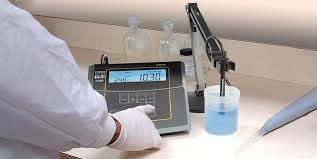Calibration Frequency of Instruments and Other Measuring Devices

Calibration Frequency of Instruments and Other Measuring Devices
In a pharmaceutical GMP environment, calibration frequency is determined based on regulatory guidelines, manufacturer recommendations, risk assessment, and historical performance of the instrument.
General Principles
-
GMP Requirement: Instruments must be calibrated before use, at defined intervals, and whenever accuracy is in doubt.
-
Risk-based approach: Critical instruments (impacting product quality) require more frequent calibration.
-
Manufacturer guidance: Often used as a baseline but may be adjusted with justification.
-
Documented schedule: Must be part of the calibration program, approved by QA.
Typical Calibration Frequencies in Pharma Labs
| Instrument / Device | Typical Frequency | Notes |
|---|---|---|
| Balances (analytical, top-loading) | Daily verification + yearly calibration | Daily with standard weights; annual with certified weights. |
| pH Meters | Daily (before use) | Calibrate with at least 2 buffers. |
| HPLC / GC | As per system suitability (daily) + annual preventive maintenance | Detector wavelength accuracy, flow rate, injector precision checked. |
| UV-Vis Spectrophotometer | Quarterly to annually | Wavelength accuracy, photometric accuracy verified. |
| FTIR | Annual calibration | Intermediate checks with polystyrene film. |
| Thermometers / Temperature Probes | Yearly or as per risk | More frequent if used for critical stability chambers. |
| Pressure Gauges / Vacuum Gauges | Yearly | Calibration against standard gauges. |
| Stopwatches / Timers | Yearly | Against a traceable time standard. |
| Micropipettes | 3–12 months | Based on usage frequency. |
| Environmental Monitoring Instruments (humidity, particle counters) | 6–12 months | GMP critical. |
Key Regulatory References
-
21 CFR Part 211.68 – Automatic, mechanical, and electronic equipment.
-
EU GMP Chapter 3 & 4 – Equipment and documentation.
-
WHO TRS 986 Annex 2 – Equipment calibration and maintenance.
Best Practices
-
Maintain calibration status labels with due date.
-
Keep traceable certificates (e.g., NIST standards).
-
Immediately quarantine equipment found out-of-calibration.
-
Document any OOC (Out-of-Calibration) events and assess impact on previous results.

